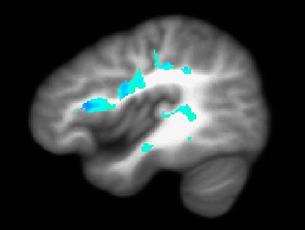Published: February 28, 2009
 Tortured by taunts- the BBC takes a look at why kids can be cruel about mental illness.
Samantha Hilton remembers her friends literally walking away from her. She had started self-harming because of depression from the age of 13.
School was “hell” she says – a catalogue of rejection by teachers, friends and doctors, who put her behaviour down to “teenage angst” or hormonal changes.
Her account does not shock PhD student Emma Lindley, who has devised lessons to help teachers combat the stigma surrounding mental illness in children. Continue reading
Emma herself has bipolar disorder, but manages her condition well and is a PhD student and works as a lecturer at the University of Manchester. The mental health campaign group Time To Change surveyed more than 3,000 adults living with mental health problems – and a majority thought education to prevent negative attitudes should start in school.Â
How would you react if someone you knew had a mental health issue?
Link to Time to Change to find out if you are a mental health helper or hinderance?Â
Source: BBC, Time to Change
Published: February 24, 2009

Image credit: iStockphoto
Over the past few weeks in the Lower Mainland of BC there has been a spate of gang related shootings and incidents. Premier Gordon Campbell called the recent scourge of gun violence in the Lower Mainland “appalling,” adding British Columbians “have had enough.”
So this newly published research from Leicester University is quite topical. It looks at gangs in schools, and the findings suggest that the influence of a locality in which a school is situated is one of the biggest concerns where problems of gangs in schools exist. [continue reading…]
Published: February 18, 2009

Image: iStockphoto
Past behavior is generally considered to be a good predictor of future behavior, but new research indicates that may not be the case in the development of depression, particularly among adolescent girls. University of Washington social scientists tracked first- and second-graders for seven years and found that anti-social behavior among girls and anxiety among both sexes predicted depression in early adolescence. Surprisingly, early signs of depression were not predictive of adolescent depression.
[continue reading…]
Published: February 3, 2009

Yellow areas in the brain of a heavy marijuana user show brain regions with the most significant abnormalities. These areas correspond with those under development during normal adolescent years.
Adolescents and young adults who are heavy users of marijuana are more likely than non-users to have disrupted brain development, according to a new study. Pediatric researchers found abnormalities in areas of the brain that interconnect brain regions involved in memory, attention, decision-making, language and executive functioning skills. The findings are of particular concern because adolescence is a crucial period for brain development and maturation. [continue reading…]



